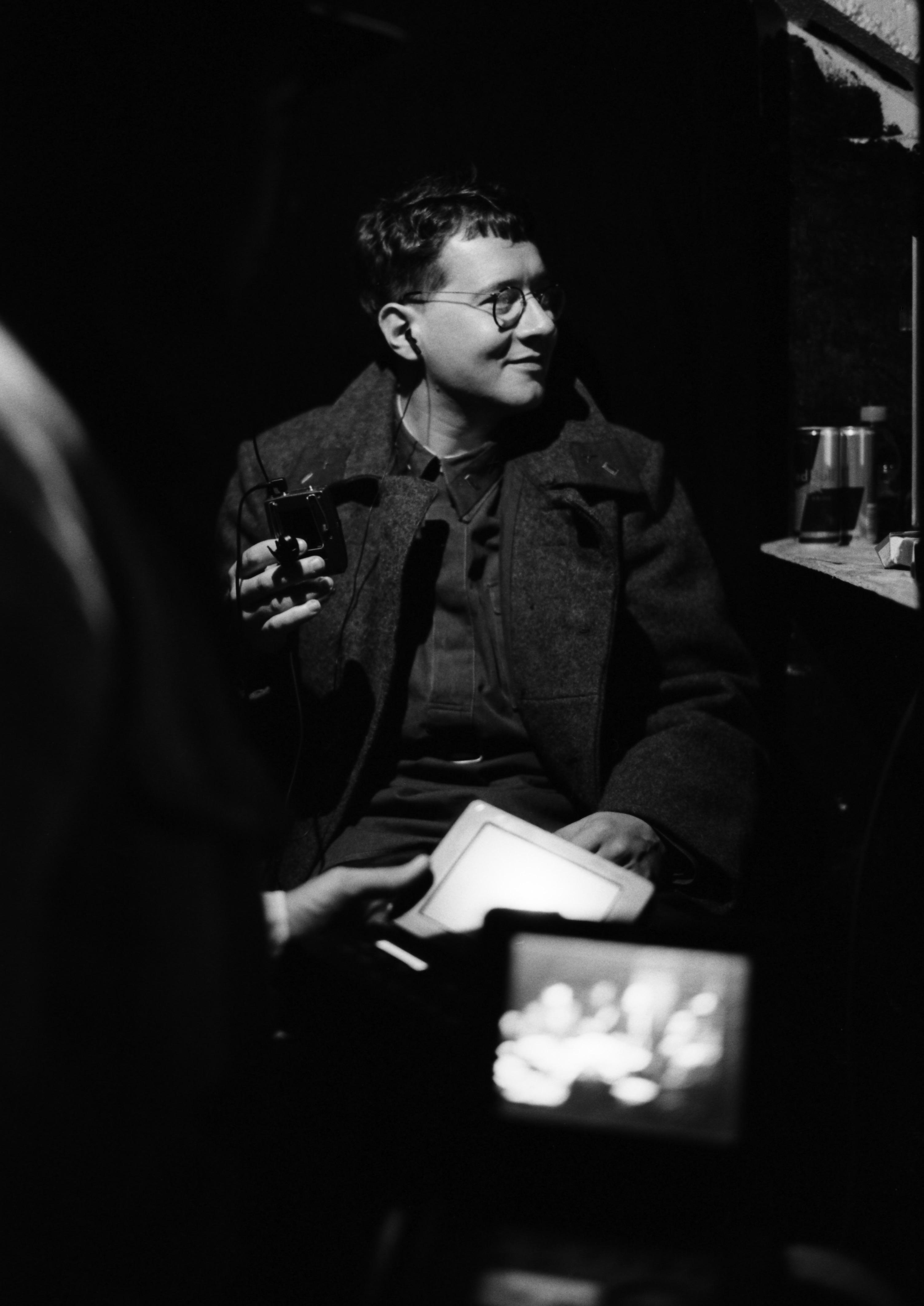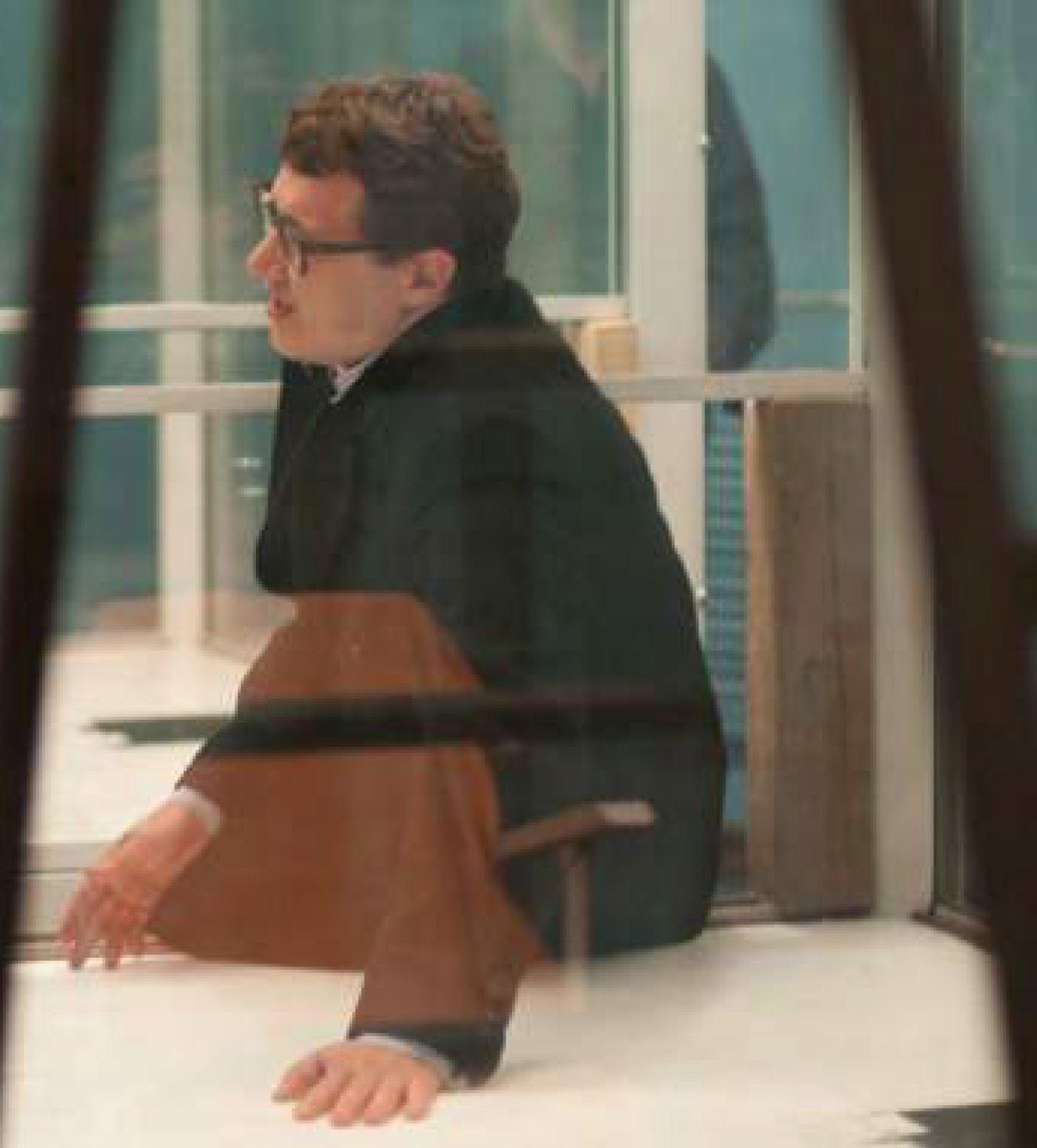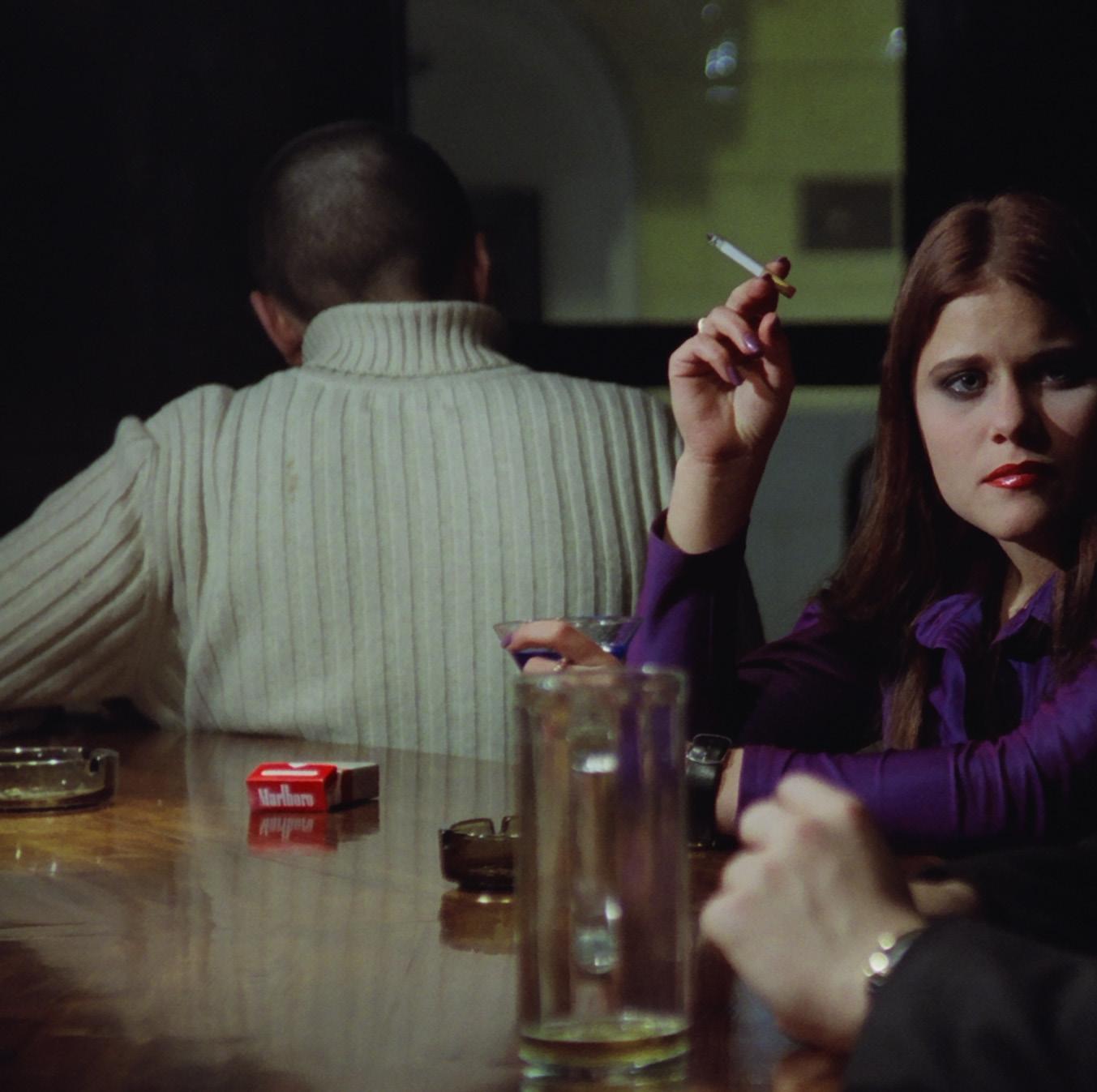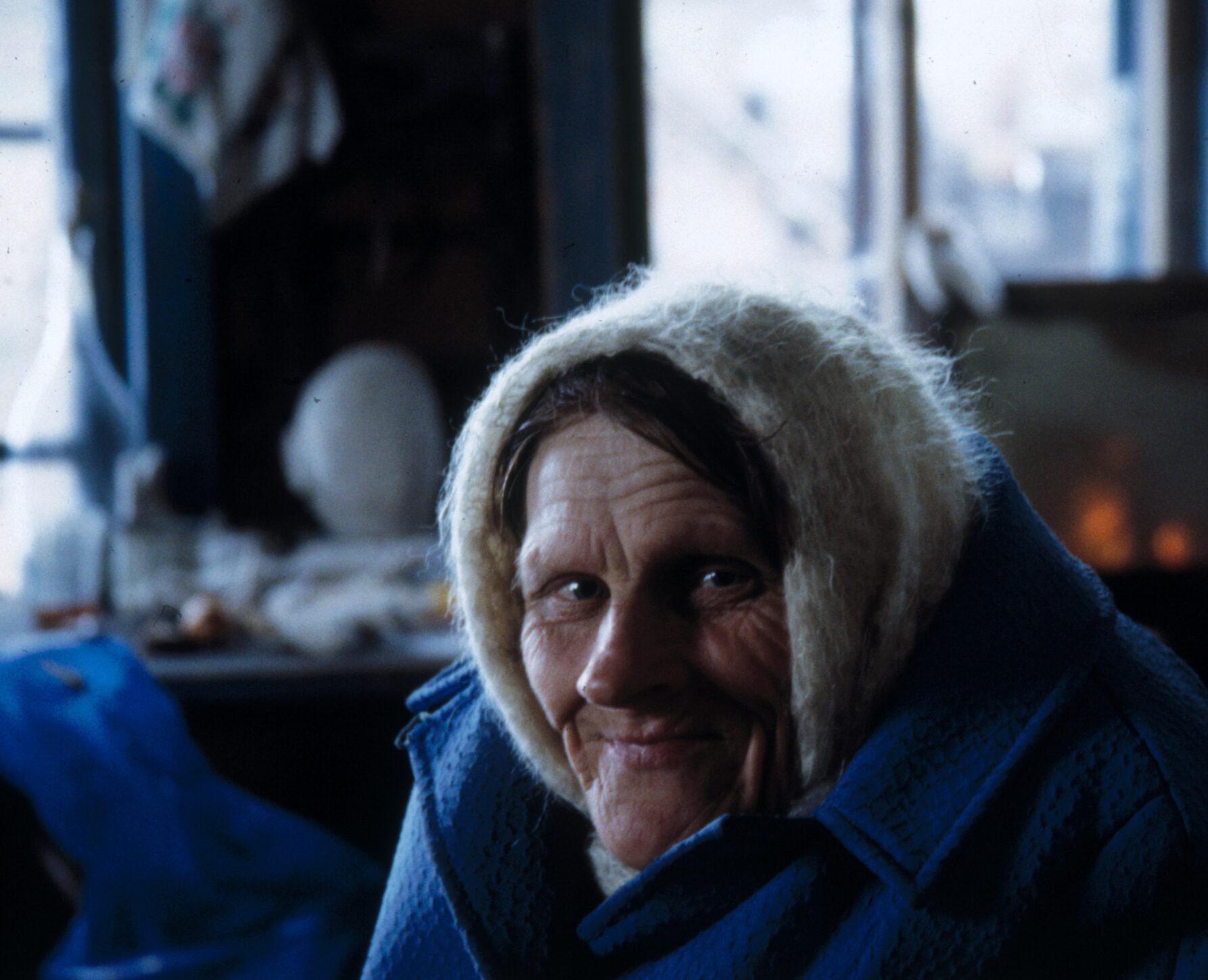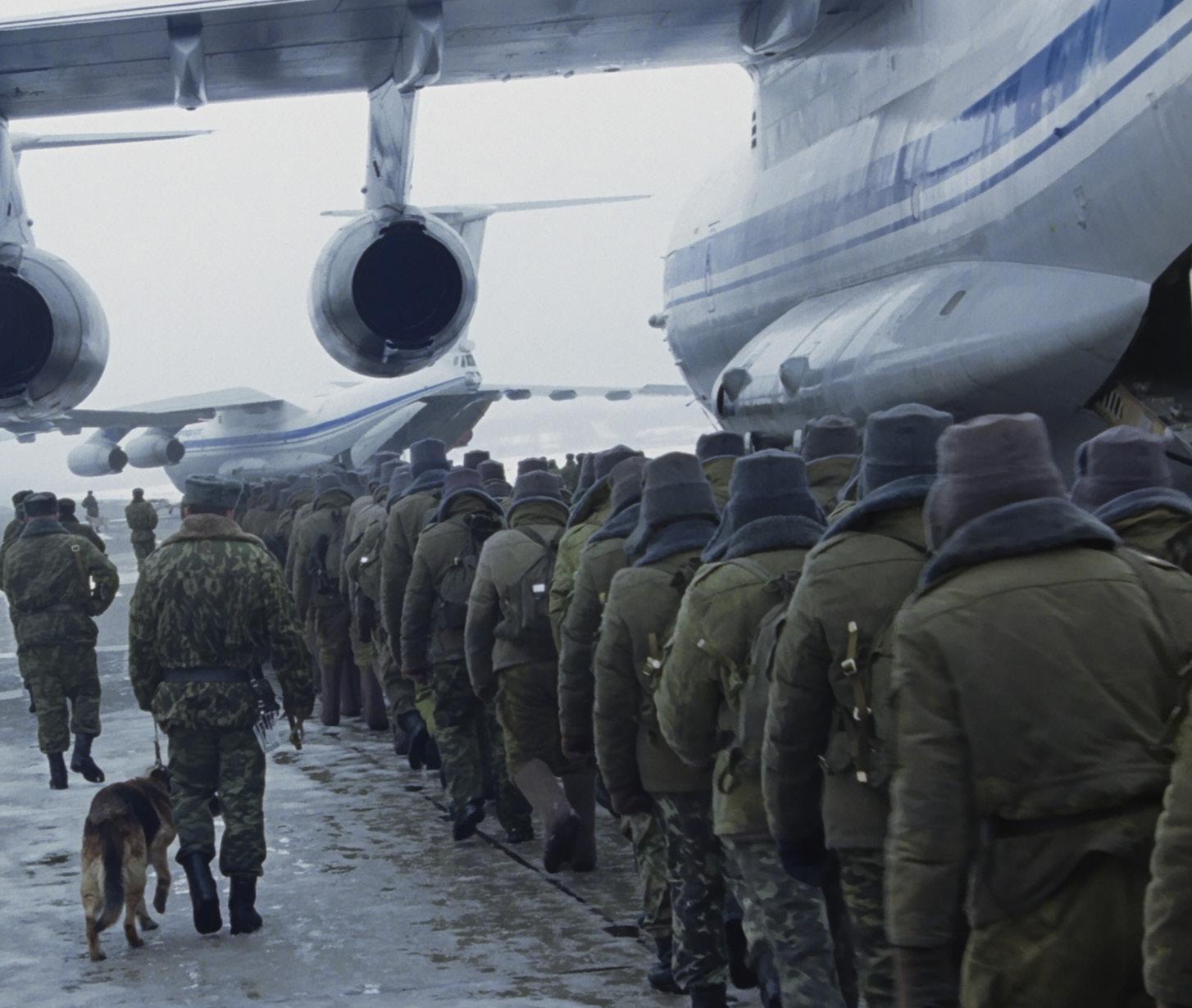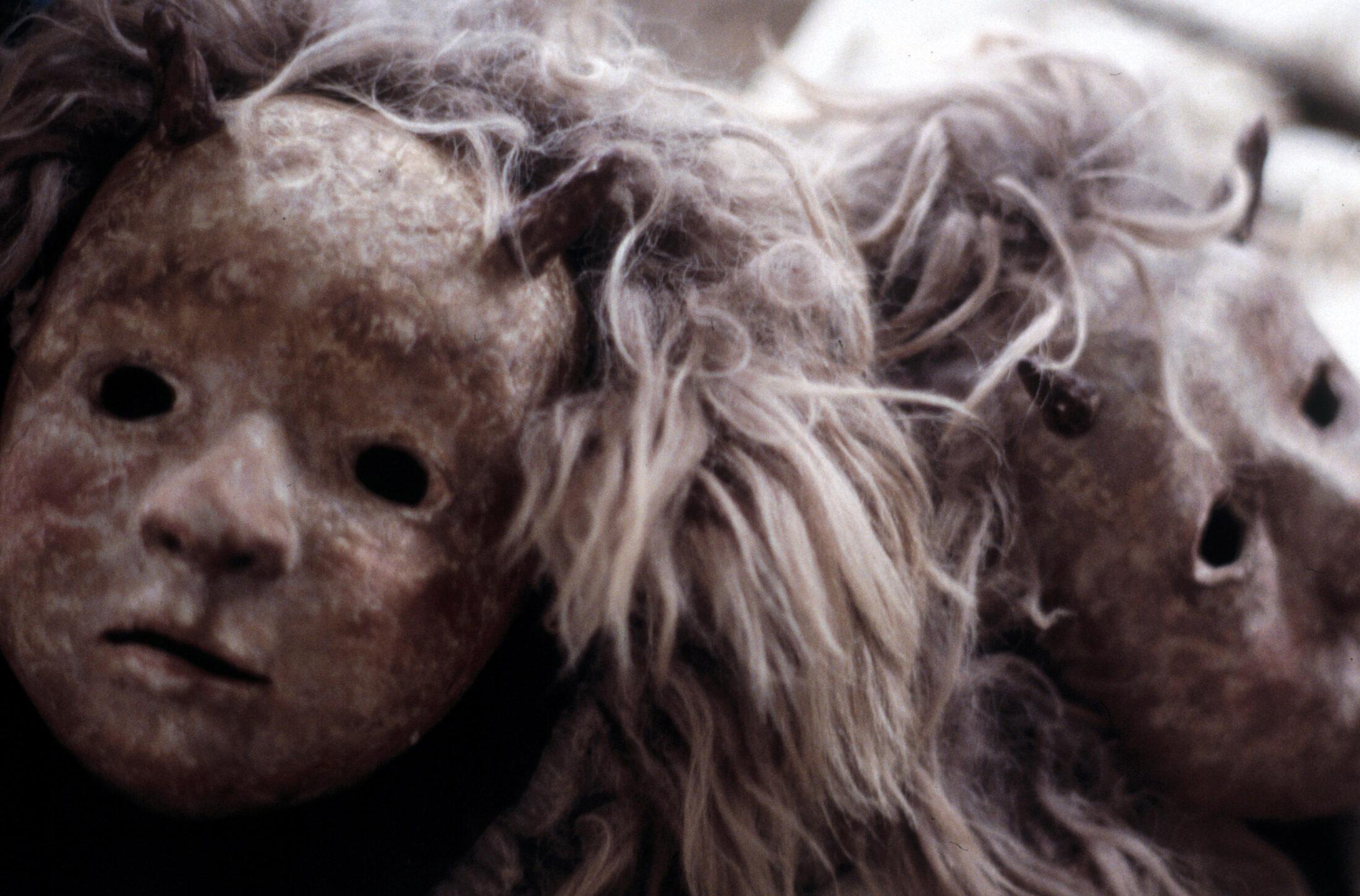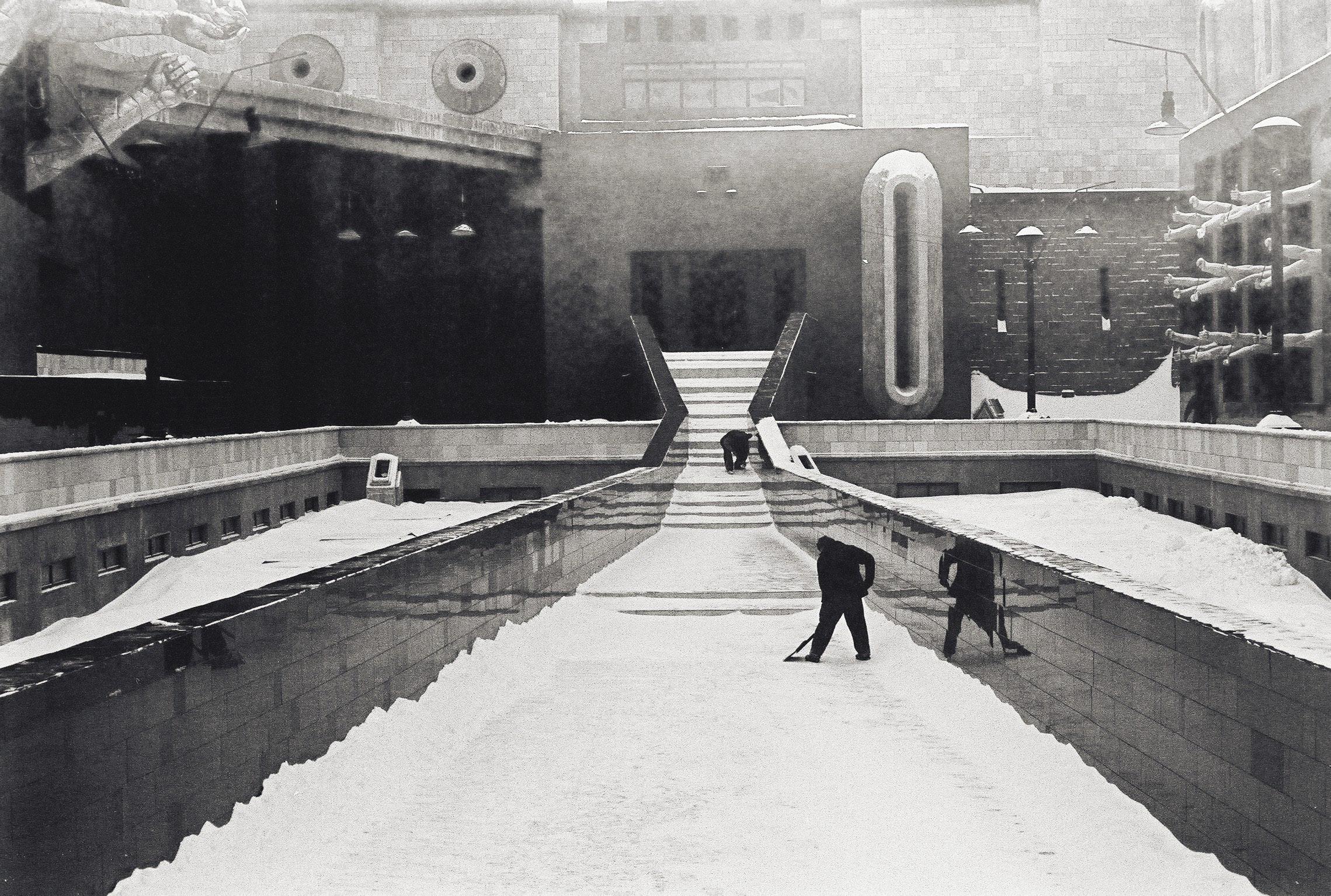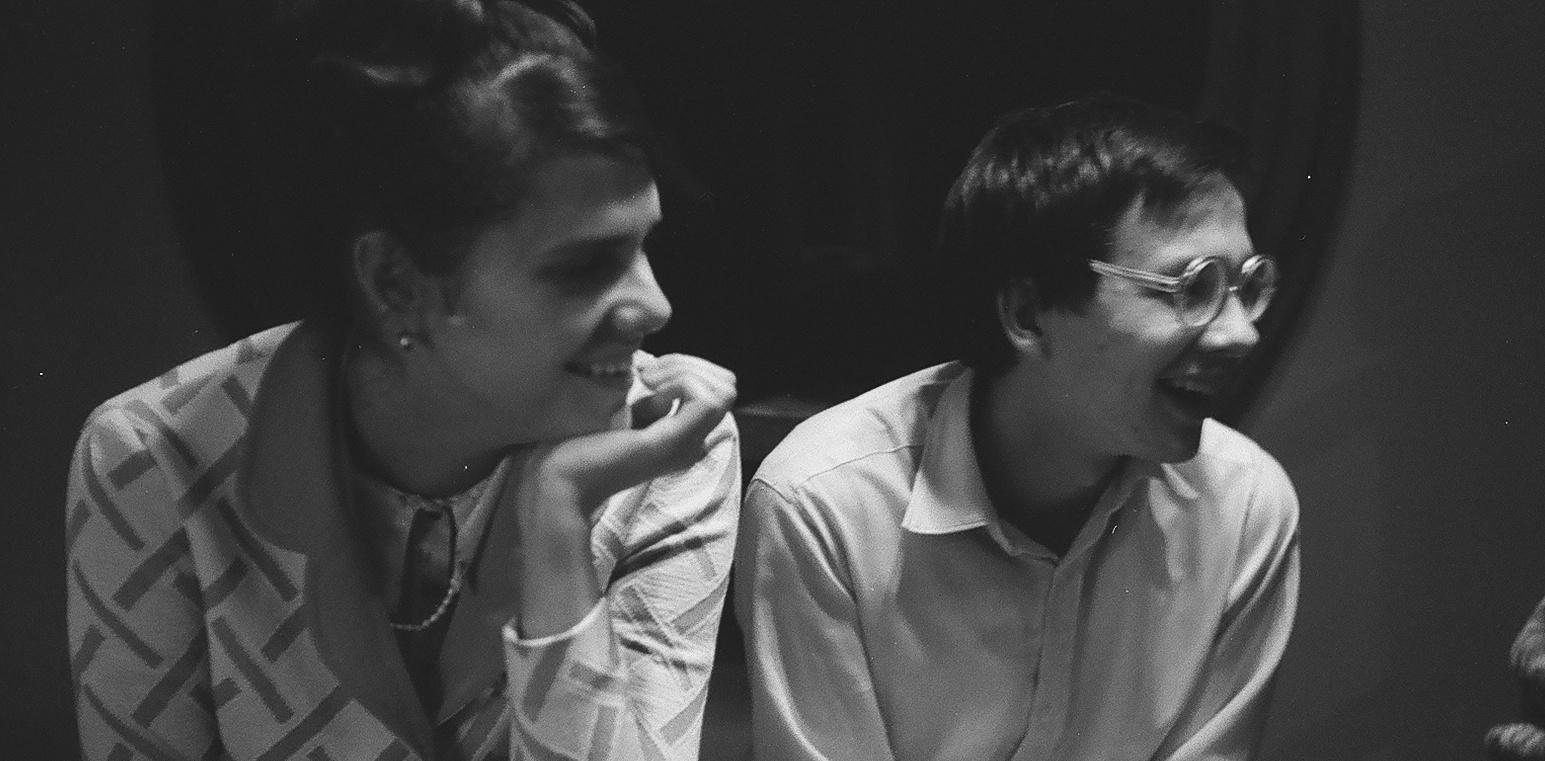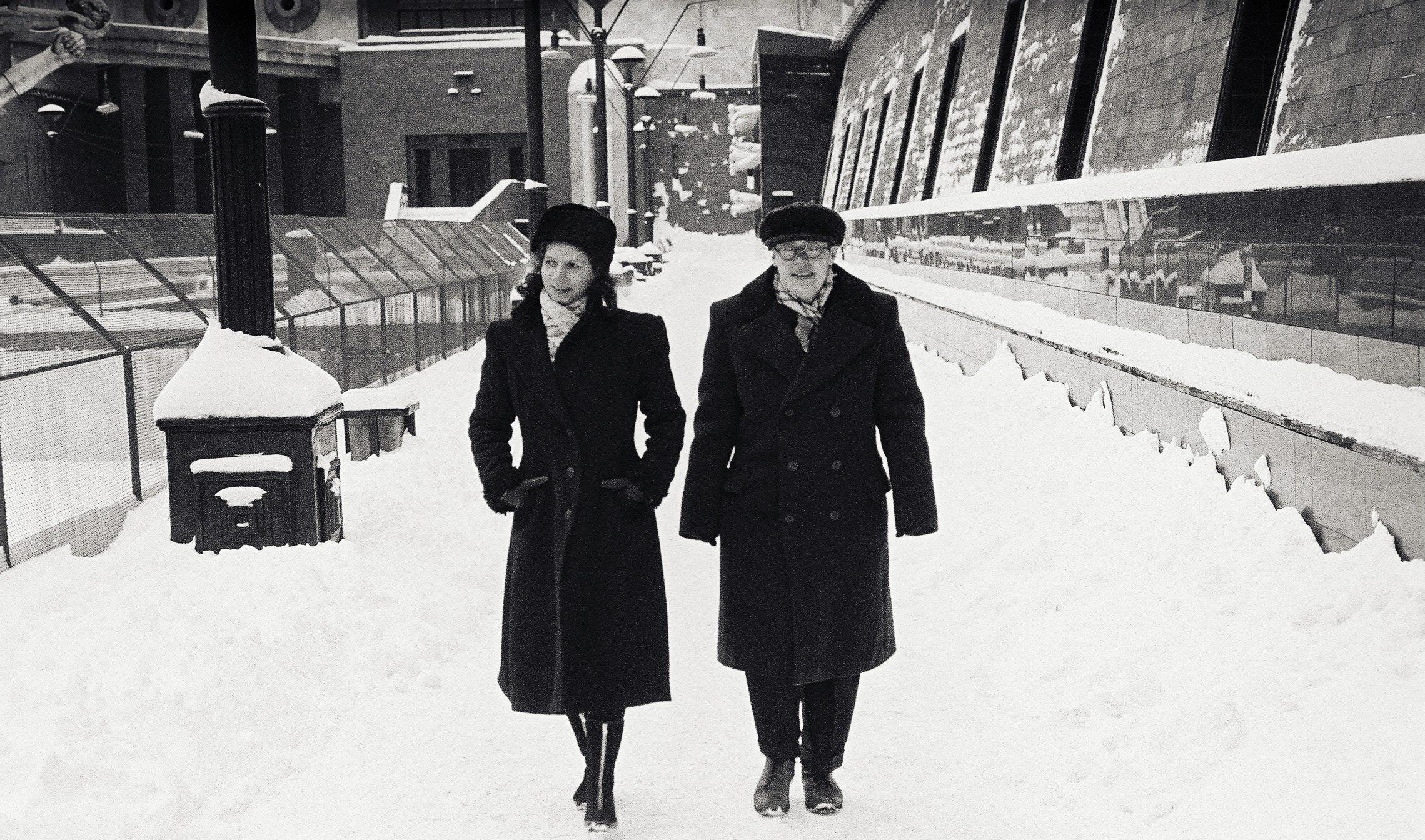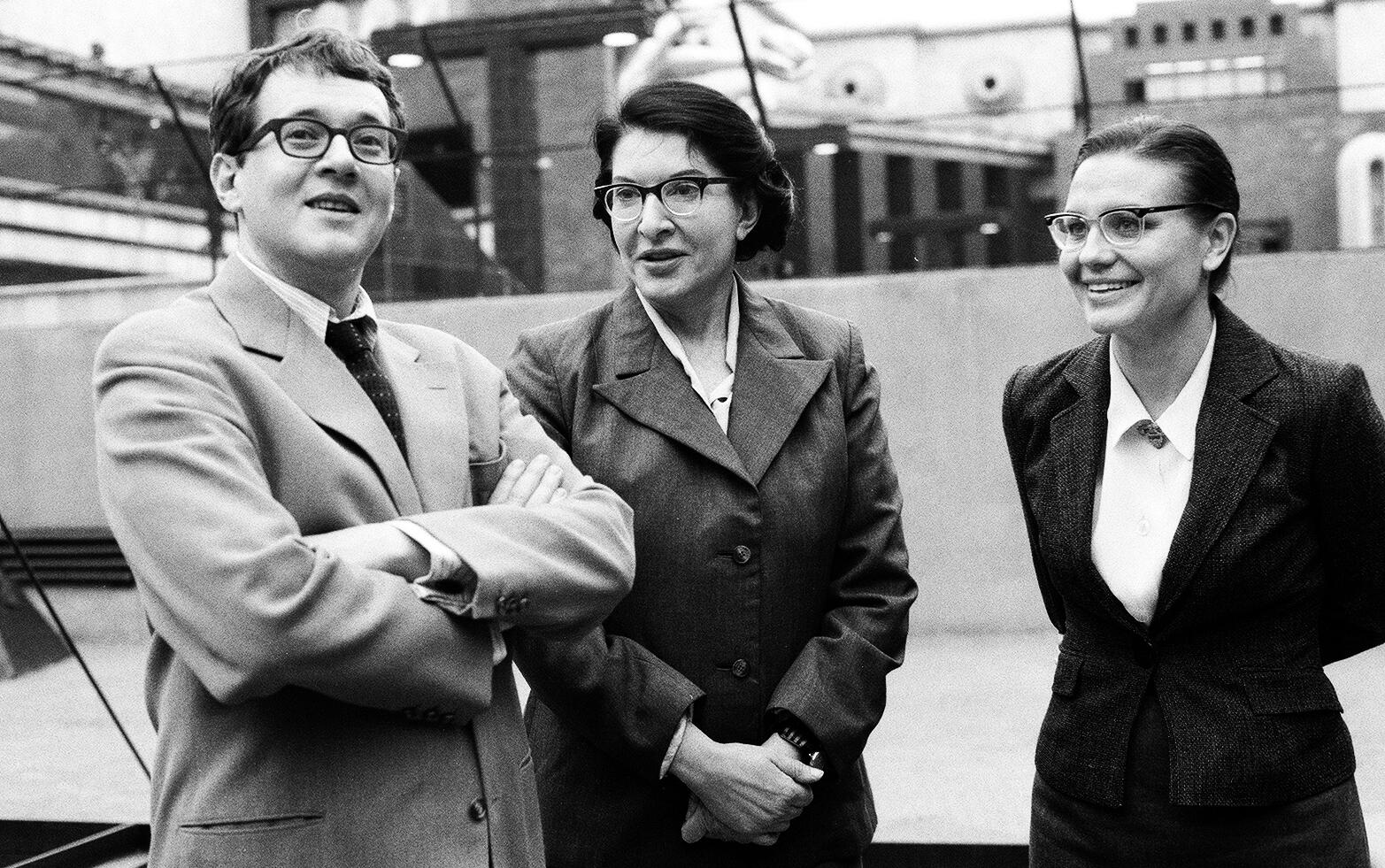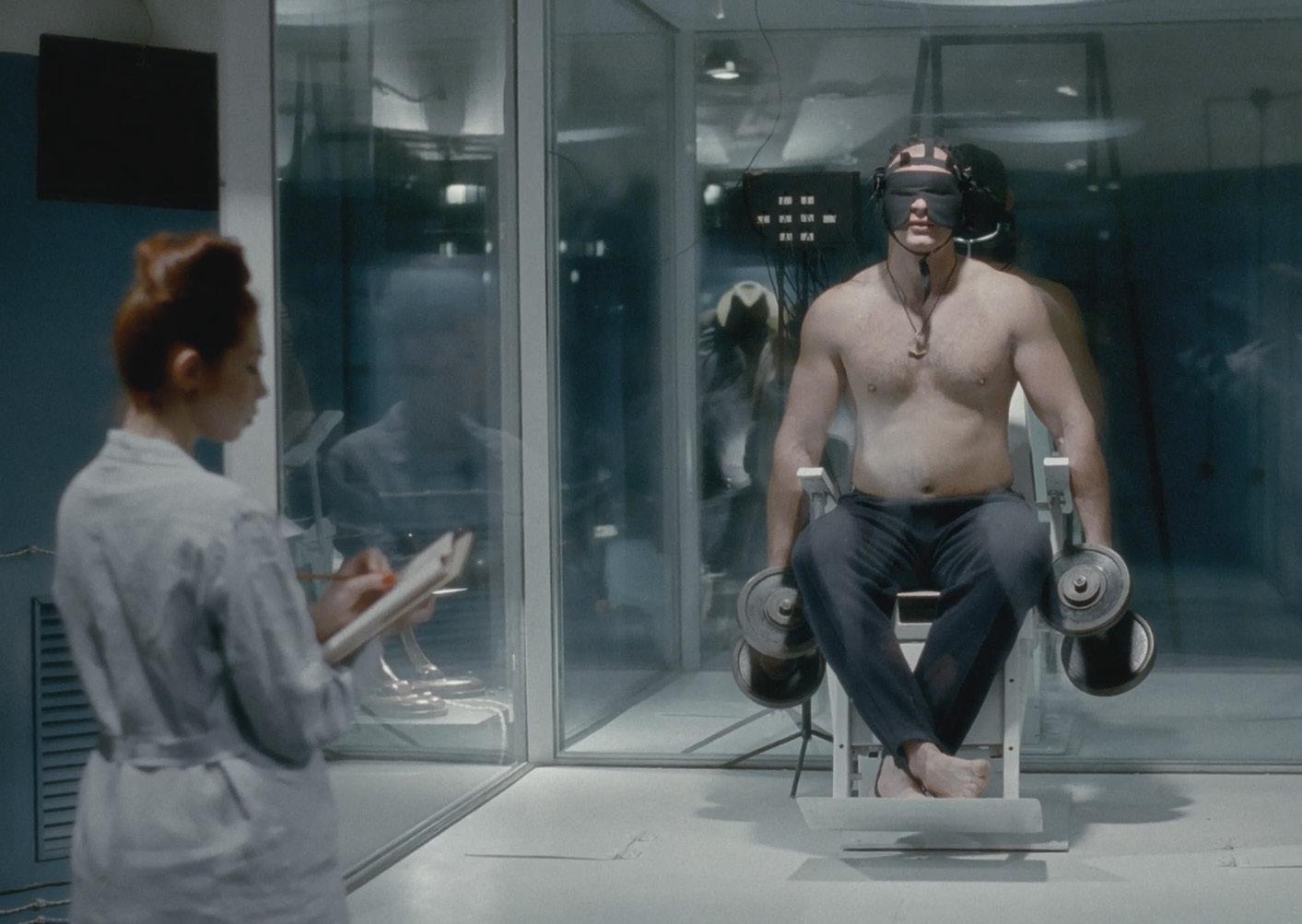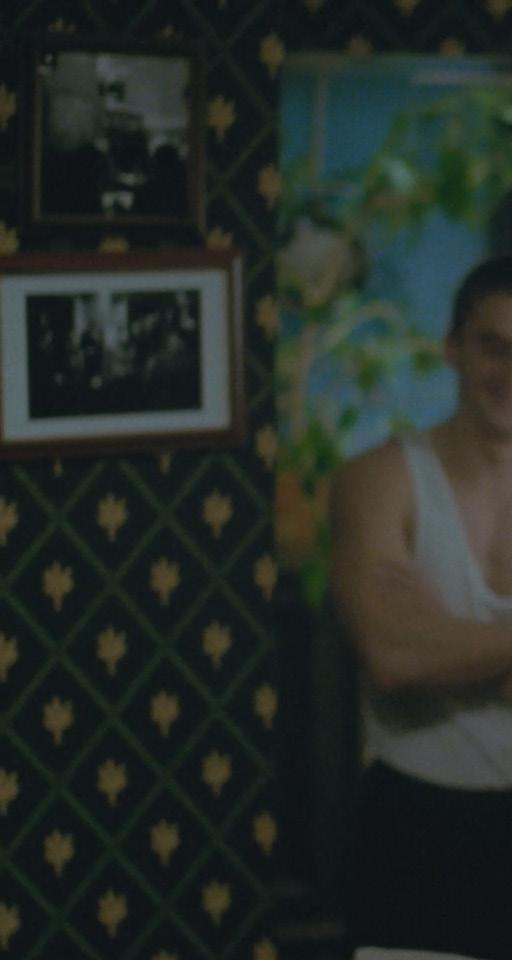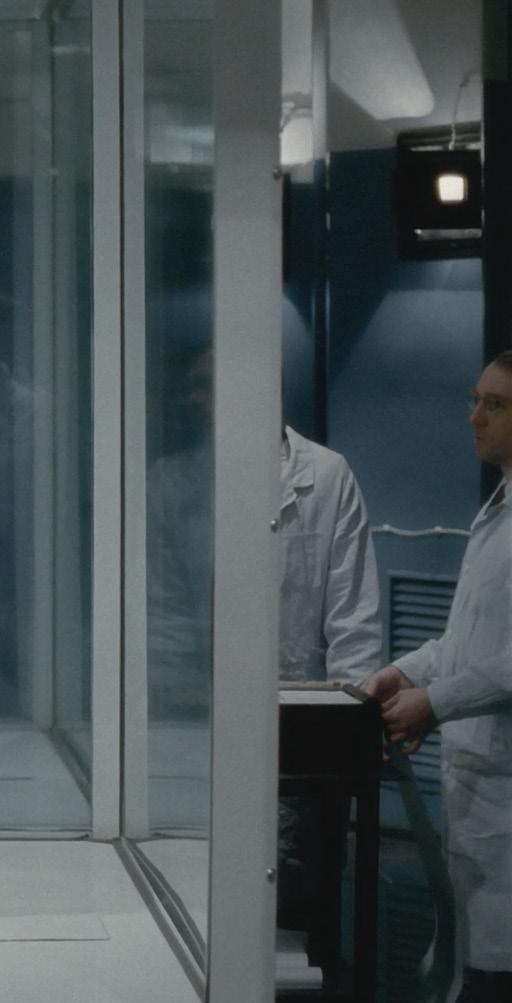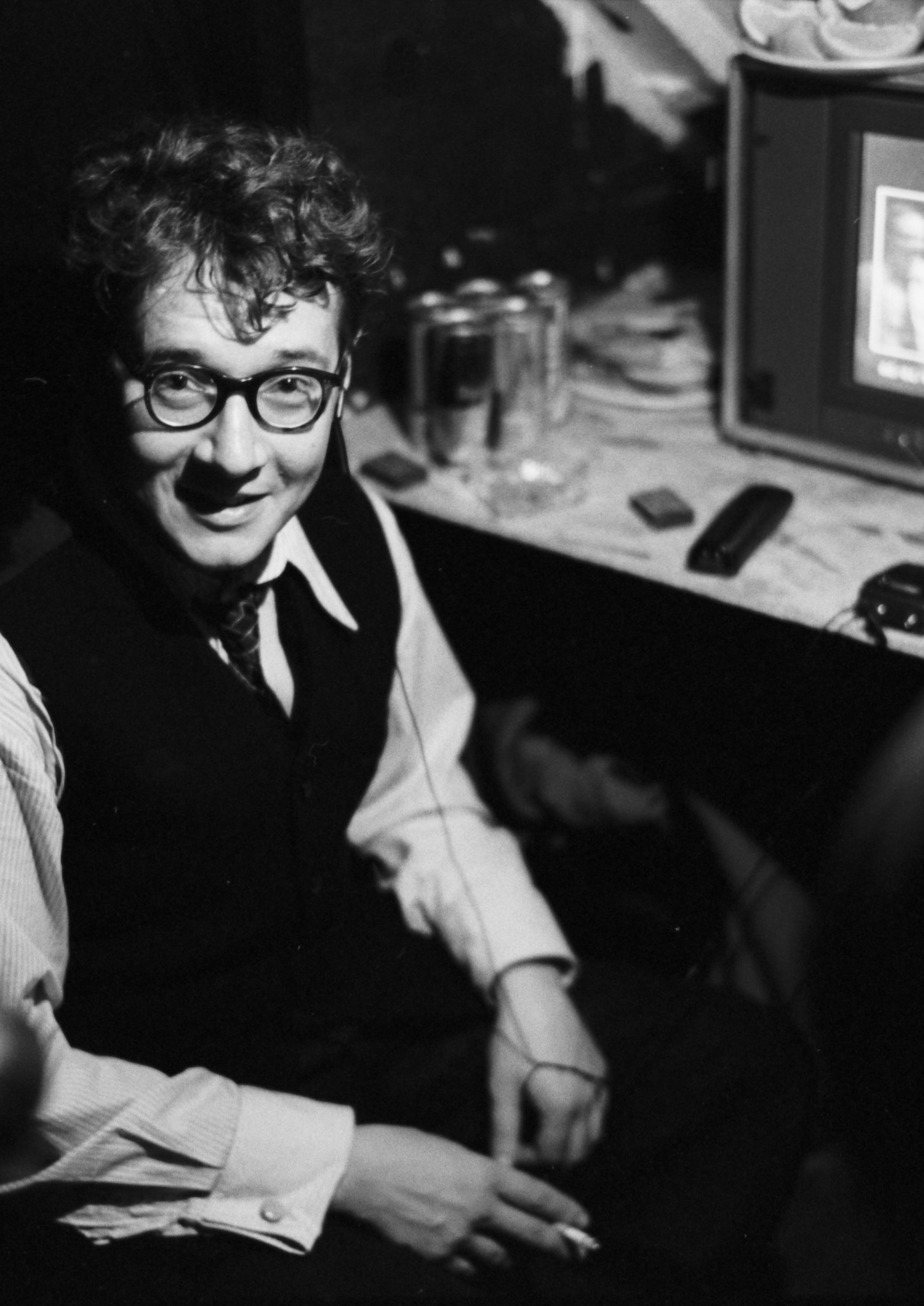Real with
Text by Bianca Lucas
Ilya Khrzhanovsky stands as one of the most provocative and ambitious figures in contemporary cinema and art. Born into a Ukrainian-Russian family of artists, Khrzhanovsky’s early exposure to creative environments shaped his unique vision- a vision hellbent on challenging the boundaries of film and reality itself. Khrzhanovsky’s breakthrough came with his debut feature, “4,” a film that delved into the raw, unsettling realities of post-Soviet Russia. Recipient of the Tiger Award at the 2005 International Film Festival Rotterdam, “4” was not merely an exercise in radical cinema, but a venture into the Russian heart of darkness.
But it is the DAU project that truly defines Khrzhanovsky’s legacy thus far. Conceived initially as a film about the Russian physicist Lev Landau, DAU evolved into something far more expansive and extreme: a vast, immersive experiment in collective living and in the cloning of the Soviet Era as a reimagined historical fantasy. The experiment itself became the artwork, not least because it called for ingenious creative solutions in order to keep the authenticity of the Institute intact. At the 70th Berlin International Film Festival in 2020 DAU. NATASHA (the first of several films born from the Dau project) won the Silver Bear for Outstanding Artistic Contribution. Since 2019, he is also the Artistic Director of the Babyn Yar Museum in Kyiv.
No matter the project, Ilya Krzhanovsky’s work truly is a standalone chapter in the human history of imagination applied to terrific scale.
BL: It is both exciting and frightening for me to have this conversation. Your work is absolutely unique — people either admire it or reject it, but in any case, it goes beyond the ordinary. What you attempted with DAU feels like incubating an entire human consciousness — like Solaris, an all-seeing entity revealing our collective psychic depths. But let’s begin at the very start. How did your first feature film, 4, come about? What were you doing before that, and where did you get the skills to make it?
IK: I wanted to become a director from around the age of 13, but initially, my main focus was theatre. I attended rehearsals by remarkable theatre directors — it was an exciting time for Russian theatre. I dreamed of combining art forms — I loved live performance, but at the same time found it somewhat limited. As a result, I chose cinema and entered the VGIK film school, because I dreamed of studying with Marlen Khutsiev, a great Soviet director. At 15, I watched his film Infinity
and realized that cinema could freely form a new cinematic language and speak about existential problems. My father was an animation director, and we lived in the same building as Khutsiev. My parents, who wanted me to become a painter, were not happy when I dropped out of school in Germany and returned to Moscow.
At film school, I created a theatre laboratory where we explored improvisation and text analysis, and studied how to bring actors’ real stories onto the stage. Some of my most interesting work came between the ages of 19 and 21, when I focused on experimental theatre. The 1998 financial crisis brought the Russian film industry to a halt. I had ambitious scripts but no funding to realize them. My theatrical experiments were considered too strange for traditional theatre — one of them was cancelled in a Moscow theatre, and I switched back to film. But when my son was born, I needed money and started working in advertising and television.
One of my friends, a commercial producer, heard me telling a story that later became one of the scenes in 4. He offered to finance a short film, and I convinced Vladimir Sorokin, one of the greatest Russian writers, to write a short screenplay. But I quickly realized that the story required a feature-length format.
The film explored the blending of reality and dreams, the cloning of consciousness and reality, and what constitutes the authenticity of life. A friend showed me photos of a village where people performed an annual fertility ritual that involved the burial of dolls. Sorokin and I incorporated this into the script, and I traveled to the village to develop the cinematic language for what would become 4.
The film combined tightly scripted scenes with improvisation. The village wasn’t entirely real — I built it together with Shavkat Abdusalamov, who had worked on Tarkovsky’s Stalker. We created a fictional world
that felt authentic. The well-known scene with the old women exposing their breasts came after I witnessed this at a real local festival, during my friendly interactions with the villagers.
I discovered that building a world between reality and fiction gives actors and the camera freedom to capture the essence of life. I used different cinematographers for the urban and rural scenes to emphasize the stark contrast between urban and village Russia. The project stretched from a few months to four years. Following Russian tradition, I didn’t cut my hair until the film was finished — and that ultimately motivated me to complete it, because I hate long hair, and mine had already reached my waist.
BL: And what happened when you finally completed 4?
IK: It premiered in Venice and was a complete failure. It wasn’t included in the main program — critics
walked out, the Russian press hated it. Everyone said I had wasted my time. But the great Italian screenwriter Tonino Guerra, a close family friend who had written for Antonioni and Fellini, liked the film. He said that something new is not always understood right away — that helped me feel less alone.
In Russia, the film was banned. They demanded that I cut 40 minutes — scenes with the old women and dialogues about the president’s wife and a character who, in their view, resembled Putin — but I refused. Fortunately, I had previously signed a contract guaranteeing that I have final cut. The Ministry of Culture told me I would never work again — not in film, not even in television. For six months, everything felt like a total failure.
Then Ludmila Tsvikova, a programmer for the Rotterdam Festival, and Sandra den Hamer, the Festival Director, saw the film. Normally, Rotterdam doesn’t
take films that have already screened at other festivals, but they made an exception. Everything changed there — screenings were sold out, extra ones were added.
Jury president Lia van Leer, founder of the Jerusalem Cinematheque, supported the film. I won the Tiger Award. Suddenly, the same critics who had hated the film in Venice changed their minds.
It proved that sometimes you simply need to believe in your vision. After Rotterdam, Philippe Bober bought the film for The Coproduction Office — that changed everything too. I finally received permission for a limited release in Russia.
It was hard — I had a small son, debts, no income — but I was living exactly the life I wanted, even if nothing turned out as I had imagined. That’s how my path truly began.
BL: Let’s return for a moment to the very beginning — how do you feel about film schools and art academies? Do you think they contribute to artistic development, or can they actually be destructive? I ask because I’ve seen many people with unique thinking, with a distinctive vision, go into film schools and come out formatted to fit “industry standards.” What do you think about that?
IK: A film school is neither good nor bad in itself — it all depends on who teaches you and who you are as an artist. The technical side is important — how to bring a vision into reality, how to turn an idea into a film — but today, you can learn that anywhere, including on the internet. What cannot be replaced is living culture, mentorship that is passed like a spark — a person who carries a tradition you can build upon.
I had teachers like Marlen Khutsiev — a great man, but even with him, I sometimes had to fight, because that is also part of the essence of the profession: either you fight for your vision, or you gradually lose it by surrendering to compromises. A good teacher opens doors and connects you to something bigger, but they can also try to make you into their reflection — and then it depends on whether you have the strength to remain yourself. So, a school can either destroy your unique vision or sharpen it through conflict and knowledge. It is the teacher, your vision and the strength of your character that can make that difference.
One of the biggest problems in European film schools, in my opinion, is how they teach directors to work with actors. You can see it in films — in one scene, actors are performing in completely different “technologies,” because the director cannot unify them. This craft cannot be learned online. It takes a lot of practice. You have to understand human nature — because cinema is about people. Too many young directors know life only through other films — they create simulacra of reality, copying behavioral and narrative patterns from previous films. When they encounter real behavior, they say, “That’s not possible.” And then people begin behaving like those fake versions — a loop emerges, where life copies cinema, which was itself copying cinema.
BL: Let’s go back to your first film. In 4, the lies the characters tell seem almost like a curse — after that night in the Moscow bar, each of their lives starts to unravel. Was this a metaphor for Russian identity after the collapse of the USSR?
IK: I never knew exactly what I wanted to show. I don’t consider myself an intellectual — but I have strong intuition. I enter a project without answers. Only with questions and a big picture that comes as a feeling. But that big picture has to be stable. Then I build elements, situations, images — like a painter choosing colors, not always knowing why. Sometimes a constructed reality shows the truth more precisely than ordinary reality.
BL: What were you trying to show about post-Soviet Russia?
IK: The nature of Russia is a nightmare mixed with tenderness, love intertwined with hatred. That kind of tenderness often opens the door to violence — the more love, the greater the swing, the more hatred, and you lose yourself. That mixture is the essence of Russia.
I try to show that beneath visible reality there is another — it cannot be measured, but it can be felt. And if you feel it, perhaps you begin to understand how to connect to it, how to interact with it. After all, we all live on the same planet.
4, photo by
Timofej Parschikov
Tribute to Ilya Khrzhanovsky / 31st Sarajevo
4, photo by Timofej Parschikov
photo by Volker
Gläser
photo by Eduard Durjev
photo by Eduard Durjev
“ I enter a project without answers. Only with questions and a big picture that comes as a feeling.”
DAU. Degeneration
BL: There is something in that combination of darkness and intimacy that feels distinctly Eastern European. I’m from Poland myself, and it seems to me that Eastern Europeans wear their suffering openly. I now live in Los Angeles — and it’s the opposite here: people always say they’re “fine,” but underneath, there’s considerable pain. Do you think this readiness to show suffering is a post-Soviet legacy? Or is it something more ancient?
IK: That feeling — the readiness to show suffering, darkness, intimacy — yes, I agree with you, but it goes deeper than the Soviet period. Dostoevsky knew this love of suffering. In Russia, the artist must suffer. It’s the foundational pattern Russian artists are raised on. That’s why we don’t have Rubenses or Picassos — we have Pushkin or Mayakovsky, with their tragic endings. We answer “How are you?” with the truth. It’s a different kind of privacy — intimacy. Yes, in the West, people suffer too, but they hide it. It’s not better or worse — just different.
But you see it in East Germany as well — in people’s faces, in the tension that has remained for decades. This is partly connected to the former systems of Soviet oppression. We never went through real rites of passage to heal — we never openly said that the KGB was a criminal organization, we never dug up Stalin, we never closed the cemetery of criminals on Red Square. And so the old, festering sickness remains.
BL: Is that why you focused on the village in 4?
IK: Yes, I felt I had to go to the village — to dig deep, to the roots. Same with DAU. I wanted to find what is in my DNA that shapes how I behave. For me, a film is not a finished statement — it’s a journey. I create situations so that maybe I myself — or someone else — might see something real in that muddy mirror. Sometimes it’s about Russia, but more often — it’s about the human being in general. That’s why my work sometimes hits the soul like a dagger — it provokes strong reactions. Sometimes love, sometimes hate. Of course, I would like to be loved — but I understand why sometimes I’m hated for what I do.
BL: In your opinion, what makes post-Soviet culture unique? How is the Soviet legacy different from other totalitarian regimes — like Nazi Germany, Mussolini’s Italy, or Franco’s Spain?
IK: I can try to answer that precisely. It all stems from a particular kind of suffering in Russia. People are still proud of the empire — they preserve that pride even when they know it was largely built on crimes. But there has never been real repentance. That’s the key word — repentance. Not just acknowledgment, but an act of taking responsibility and repenting for what was done. In Russia, that never happened — though it should have become a part of our culture, even of the Orthodox Church. Especially in the aftermath of Soviet totalitarianism. We committed horrible things — mostly against ourselves, but the most frightening part is that we continue to do so, and not only to ourselves. The current war with Ukraine is terrifying proof of that. After the collapse of the USSR, there should have been trials, and a clear stance taken against the Communist Party and the KGB — just like Germany did after Nazism: they put war criminals on trial and banned Hitler’s books. In Russia, everything just loops: one day Stalin is a criminal, the next he did some good, then we start building monuments to him again, and later we say he made no mistakes at all. So you never see a
clear and complete picture. Everything keeps mutating — toward self-justification and back toward pride. The perspective is always shifting — there’s no clarity, just this carousel.
Yes, that distortion is at the core of 4. Forces surround you, and you can only take a few steps within the system — you try radical rituals to escape, but you don’t know if escape is even possible. But you have to try.
BL: That brings us naturally to DAU, your project after 4, and to the closed Soviet labyrinth you built, with the figure of Lev Landau at its center. At first you wanted to make something like a “biopic” about him, and then the project transformed. What drew you so much to Landau?
IK: First of all, DAU is not about Lev Landau. His story was only a starting point for the journey. But yes, his life story in itself is extraordinary. When I was a child, Lev Landau was a hero of the Soviet intelligentsia — a genius with a unique sense of humor, who always tried to remain free inside the golden Soviet cage. He was a great physicist who believed he could change the world, part of that generation of physicists in the first half of the 20th century who saw science as a transformative power. But when his wife’s memoirs were published in the early 2000s, they caused a huge scandal — they described aspects of a scientist’s reality that were never spoken of, details of private life that didn’t fit the Soviet narrative. In the USSR, memoirs were quite ascetic regarding personal life — especially when it came to prominent figures, no one wrote that way.
BL: Like what details?
IK: For example, how they tried to live freely — aspects of open relationships, details that didn’t correspond with the official version. The private lives of major scientists were nearly sacred. They were like angels. And they truly believed they could change the world — like Einstein and the quantum universe. They saw an invisible, inexplicable world and found ways to explain it, to create astonishing things. They felt connected to the universe. But the result turned out differently — they created the most terrifying weapons capable of wiping out all of humanity: atomic and hydrogen bombs.
BL: But as far as I know, you started filming and then felt it wasn’t authentic. That’s when you stopped the shoot and began building what is now known as the Institute?
IK: Not quite. One of the reasons I wanted to work on this film was that Landau’s life, to me, raised important and interesting questions. Landau came from a wealthy family, he was a universally recognized genius, always successful in everything, loved by friends, colleagues, and beautiful women. In theory — he had everything. I wanted to understand: what is happiness when you already have everything? Most people fight for career, money, love. But what happens when all those battles are already won?
Landau’s theory of happiness was simple: work, freedom, friendship, love. But how do you hold on to happiness? How do you not lose it? And what is it, really — happiness?
Because in the end, his life was full of tension. These grand ideas — to change the world, to think about the stars and the universe — eventually led to atomic bombs. You want freedom and happiness, and find yourself in a hell of complex relationships and suffering.
And on top of that, Soviet reality always had a latent cruelty — not only from the KGB, but also within peo-
“ Sometimes, to speak freely about your time, you have to shift reality somewhere else.”
DAU. Degeneration
ple themselves, in how they treated one another. That’s why these elements of Landau’s story became especially interesting and very relevant to today’s world for me. I kept asking: how can I speak about the present while preserving distance? Again — that same muddy mirror. But I realized that traditional cinema could not express what I wanted. A week before the shoot in Saint Petersburg, I cancelled everything — even though we had already spent 1.5 million on preparation. I moved to Kharkiv and completely rebuilt the concept. The character of Lev Landau left the project forever. His story only vaguely inspired some new forms and the language of the project.
That’s when the project became more than a film. It became a quantum reality — a way to speak about the present by creating a historical fantasy. Sometimes, to speak freely about your time, you have to shift reality somewhere else. The real world is too close — like when you walk into someone’s apartment, and there’s a mess and a smell, but the owner no longer notices it — it’s just their life.
Fantasy, fairytale, historical film became for me a way of talking about the present. I kept asking: what does the Soviet mentality mean? Who am I?
BL: A mind that is always on alert — hyper-attentive, strategic, trying to survive because it never feels safe.
IK: Exactly. Look at the now-vanished class of “New Russians,” the nouveau riche. I understand why they celebrated life so wildly — they knew the window would only be open for a short time, and they tried to grab as much as they could for the next seven generations. They tried to build a different reality in the present moment, without thinking about the future and
without remembering the past. It’s the same with other descendants of the Soviet empire — we don’t think about the future because we don’t remember the past. Western Europe, Poland, the Baltic countries — that’s a different matter. But in Russia, Ukraine, Belarus — we know nothing about our grandparents. Or we know only some fake story or some very shallow recent version.
BL: So that’s when you created the Institute. Can you tell me what it was — its purpose, how it functioned, and what it led to?
IK: We created an entire world. We considered 352,000 people to find the right faces and energies. Participants changed everything — their underwear, their language, their body movements. We tried to be as historically accurate as possible. It was important that the characters felt no connection to the present, and that their connection to the past had to be formed. Details were key. For example: coats were heavier. Plumbing functioned and sounded differently. We shot over 700 hours on 35mm film, created more than 40,000 costume items, tens of thousands of artifacts, 4,000 hours of audio recordings, and so on.
BL: Tell me about the cinematographers and the visual approach in DAU.
IK: The concept was to divide the protagonist’s life into time periods, with each block shot in a different style — different color schemes, different plasticity. So I wanted to work with different cinematographers and production designers for each block. For the first block, I found the British cinematographer Lol Crawley — at the time, he was completely unknown (he later won an Oscar for The Brutalist). I also invited Manuel Alberto Claro, who later worked with Lars von Trier. It was
an unconventional decision — to shoot different blocks with completely distinct styles. The real challenge was taken on by Jürgen Jürges — the legendary cinematographer who worked with Fassbinder, Haneke, and Wim Wenders. I told him: “I want a set that feels like real life. Low ceilings, small rooms. I want to shoot everywhere — 13,000 square meters — at any time. And I don’t want to see a single piece of lighting equipment.”
At first, Jürgen politely declined. He explained that cinematographers need light and proper conditions to shoot — which, of course, is obvious. But two months later, he came back and said: “Okay, this is an interesting challenge.” And he devised an incredibly complex lighting system — mirrors reflecting light through other mirrors, practical sources everywhere. The lighting crew had over 30 people.
The technical complexity was enormous. We insisted on 35mm film — because on it, you can ‘hear the sound of time’. But that’s extremely difficult for production. We decided to shoot handheld with a single camera, so that
the camera itself would become a character in the film — and that was very challenging for editing, because nothing can be repeated, and you have to edit within the shot.
The goal was a quantum portrait of an enclosed Soviet civilization — one we had invented. But its integrity had to remain undisturbed and self-sustaining. We created a fake world that had to create the impression of real life — and it had to feel real during the shoot for the participants. We recorded it with documentary precision. Like poetry disguised as a diary. Something so complex that it can’t be explained — only felt. We tried to show many layers of reality, where judgment is impossible — because you see an infinite number of perspectives. Where everything is simultaneously real and unreal.
Later, we transcribed all the sound takes and turned them into 247 books, each 500 pages long — documenting nearly three years of life inside the Institute, which was meant to feel like thirty years, from 1938 to 1968.
BL: There was a lot of criticism in the press about extreme
conditions on set. The most famous example — the GQ article. How did you handle the criticism?
IK: The GQ article? The problem was that the journalist arrived with a preconceived narrative. I agreed to let him enter the Institute and observe the project, but I warned him — don’t interfere with the lives of participants. Don’t ask them to do anything, don’t ask them to pose. We had worked so hard to create a believable flow of life — but he wasn’t interested in why we were doing it. He was only interested in his own idea of what was happening, and in the article, he wrote exactly what fit his own concept — not the reality. Yes, the article was wellwritten, but it spread rumors and misunderstandings.
BL: Does it bother you when DAU is compared to the Stanford Prison Experiment or called a cult?
IK: It only bothers me because such comparisons can limit how the project is perceived — and limit its future opportunities to reach audiences. People love simple labels, but they reduce complex projects to a single, limit-
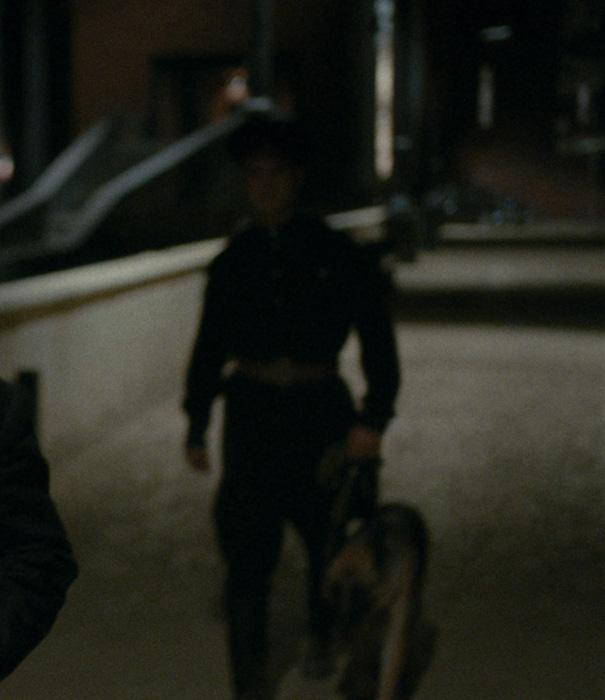
ing definition. And that’s not the truth. In fact, I hadn’t given a real interview about my work for 11 years. I wanted to remove the habitual image of the director as the speaking and sole author of a project. But when, at the end of 2019, I accepted the position of Artistic Director of the Babyn Yar Museum in Kyiv, I was forced to start giving interviews again — since that was a public project and a public role. That’s why, in Berlin, at the premiere of Natasha, I began to give interviews — but all people wanted to know was: am I a villain? What really happened on set? No one was truly interested in why I made DAU, why so many people wanted to take part in it, and what we ultimately created. The work itself. BL: For me — for better or worse — it felt like an experiment. Such things can have mixed, sometimes brutal outcomes. But isn’t it important to discuss what is and isn’t valuable in exploring human behavior through an experimental setup, especially if it’s with consenting participants? Like the Stanford Pris-
on Experiment. What we learned there about humanity’s tendency toward violence — it changed what we know about ourselves.
IK: I must repeat: I disagree with that comparison. The Stanford experiment was an experiment on people — where they were only subjects, not co-authors. But our project was fundamentally different. We weren’t just observing — the participants were active co-creators. They didn’t just live in a constructed reality — they helped shape and evolve it.
It was a living, dynamic process — part experiment, part artistic creation, part social inquiry. Participants would leave the Institute, discuss the story’s development, change the rules, rebuild the reality. It was far more complex than a traditional psychological experiment. And it was all aimed toward a result — the creation of a work of art.
The key was in its collective nature. We weren’t just observing behavior — we were creating a migrating, fluid reality in which participants had freedom within
the designed storylines and dramaturgies. It was a surreal reality that defied classification. This approach allowed us not only to conduct an “experiment” in the filmmaking process, but to explore how human beings build and adapt to complex social systems within fictional dramatic structures. I wasn’t primarily interested in the psychological, but in the existential nature of the human being and of the world. But I must admit: I didn’t achieve my main goal. I managed to depict certain psychological aspects of behavior. But what I initially wanted was to approximate a quantum view of human and worldly potential. In that sense — I didn’t fully succeed.
BL: I think many would disagree with you. But I’ll let you off the hook now — a few “fun” questions. I asked the same ones to Paolo Sorrentino. It’ll be interesting to compare. So — what’s the difference for you between art and entertainment?
IK: For me, the difference is the depth to which entertainment can reach. The best art is always enter-
DAU. Natasha
taining — think of Chaplin, or classical antiquity, where entertainment and spiritual experience were combined. Art is a kind of psychedelic drug without the substance: when entertainment becomes deep, it can pierce the soul. Cheap entertainment is like cheap alcohol or drugs. But if you think about, say, the Eleusinian Mysteries — they were akin to the ayahuasca experience, but within the territory of art. That’s entertainment which becomes a spiritual experience. It all depends on the approach.
BL: I once heard a director say: “Art without entertainment is just masturbation.”
IK: (laughs) Exactly. It all depends on how involved you are — with your spirit, your labor, your soul. We Soviet people were historically conditioned to love suffering — but real spiritual work is to live in joy, without escaping pain and suffering, yet without dissolving into them. That takes a kind of effort that’s even harder than surrendering to sorrow alone. Joy is not mere fun — it’s a spiritual practice.
What matters is how entertainment can elevate you — and how art can come close to the human being. It doesn’t have to be distant or intellectual — it must transform you through experience.
BL: Would you agree that art is about remembering, not forgetting?
IK: Yes. It’s about feeling deeply, understanding complexity, and not turning away from the difficult sides of human experience. Art should challenge you, make you see what you hadn’t seen before.
BL: Last question. If you could have dinner with anyone, who would it be — and what would you eat?
IK: With Jesus. And we all know what the menu would be.
BL: The Last Supper?
IK: (smiles and nods)
Bianca Lucas is a filmmaker and film programmer. Born to an Australian father and Polish mother in Switzerland, she grew up in Warsaw, Poland. She got her first degree in Media & Communications with a specialisation in Film at Goldsmiths College, University of London. In 2017, she graduated from film.factory- a three-year filmmaking course helmed by Béla Tarr in Sarajevo, Bosnia & Herzegovina. She has worked as a film programmer and department head at various international institutions, mostly notably the Sarajevo Film Festival and Eye Filmmuseum in Amsterdam. In 2022, her first feature film, LOVE DOG, premiered at the Locarno Film Festival where it received a Special Mention. Since her studies Bianca has lived and worked in Berlin, Istanbul, Paris, Mexico City and Amsterdam. She is currently based in Los Angeles.
DAU. Natasha
Tribute to Ilya Khrzhanovsky
